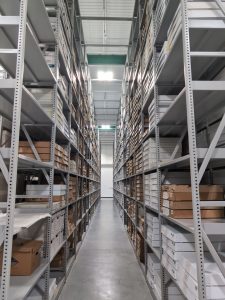Explore HCA’s updated curation guidelines for archaeological items
This spring, the Delaware Division of Historical and Cultural Affairs released its updated curation guidelines for archaeological items as another way to modernize the way the division cares for and curates physical pieces of First State history.
While these guidelines may not be used by most members of the public, they are critical to the public and private agencies and archaeologists who handle the management of cultural resources. Cultural resource management firms are on the frontlines of decisions made to preserve and catalog archaeological items that may be uncovered for a number of reasons, such as ground disturbances from capital projects or developments. Through careful coordination with the state, decisions can be made about how to best preserve snippets of Delaware’s past.

“This is part of our duty of care, as stewards of Delaware history,” said HCA Engagement and Collections Manager Meg Hutchins. “We’re also looking back at our collections for cultural considerations, while also acknowledging and showing that we are staying current and staying responsive and adaptive to the changes in the field.”
The updated guidelines include important modernizations, such as the inclusion of more digital media and how files should be shared and catalogued, as well as how to track ownership of items for record-keeping. In order to research, interpret and exhibit archaeological artifacts, HCA needs to have proof of ownership and that they were acquired ethically. Additionally, since archaeological items recovered from state-owned land must be returned to the state by law, it’s important that there is up-to-date guidance on how to execute and document that process efficiently.
Some updates include a shift toward making strategic decisions about what materials to curate and what can be documented without adding an object to the collection. The relatively new Center for Material Culture was built with room to grow, but ultimately, any building can only offer a finite amount of space. It takes intentional planning to balance spatial restrictions without losing important information about Delaware history. Some items, like severely corroded nails, will ultimately not survive storage in a curatorial facility for long. However, the data these items provide can be preserved with X-ray technology, rather than by keeping the artifact itself.
“For us to be able to continue to take archaeological items in perpetuity, which we want to do, we have to think critically about our space and about what the standards we must hold those items to for the sake of the collection at large,” said Hutchins.
Fees associated with archaeological curation support the maintenance of those items within the collection. For more information, go to history.delaware.gov/collections or email collections.team@delaware.gov.


